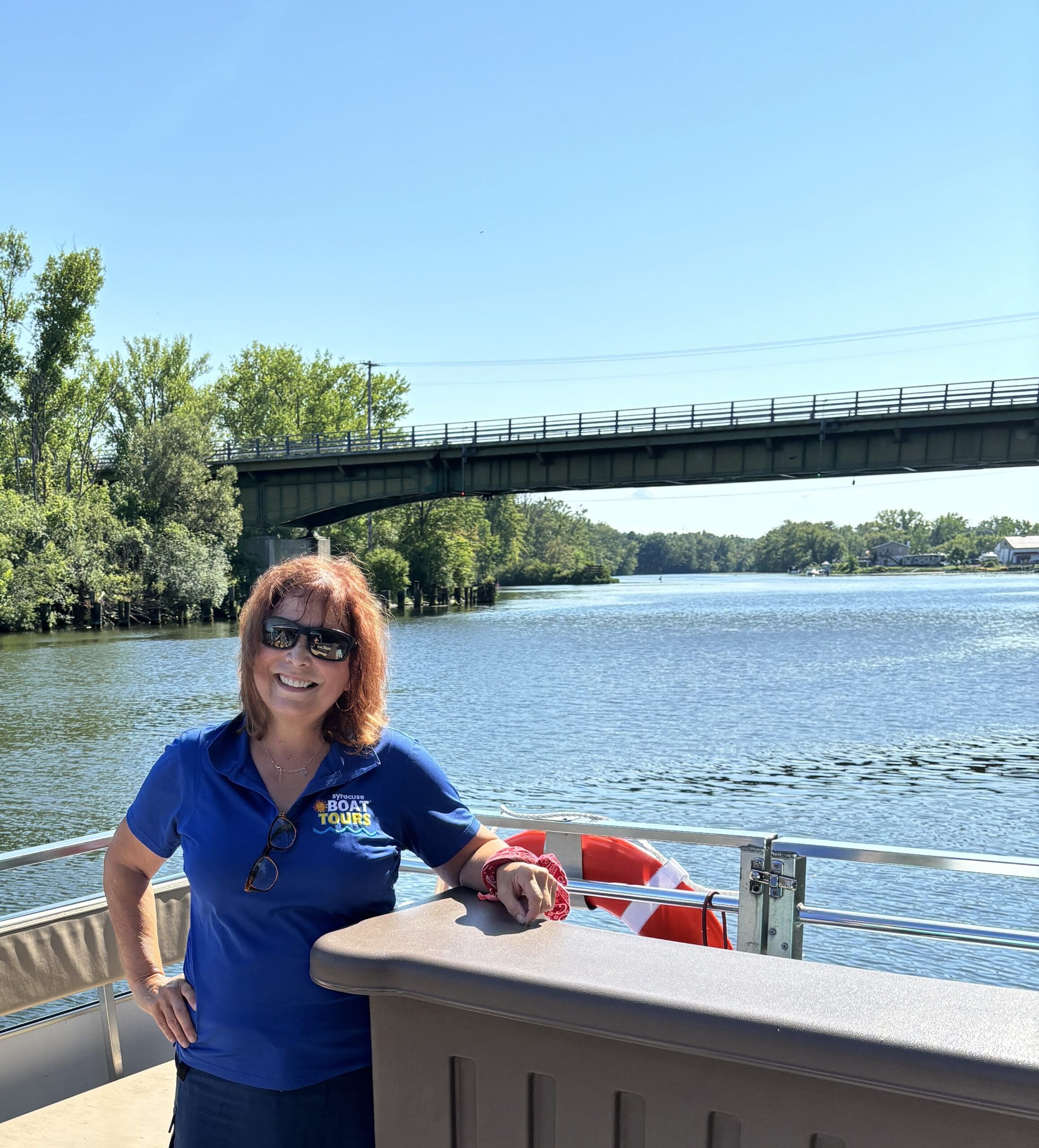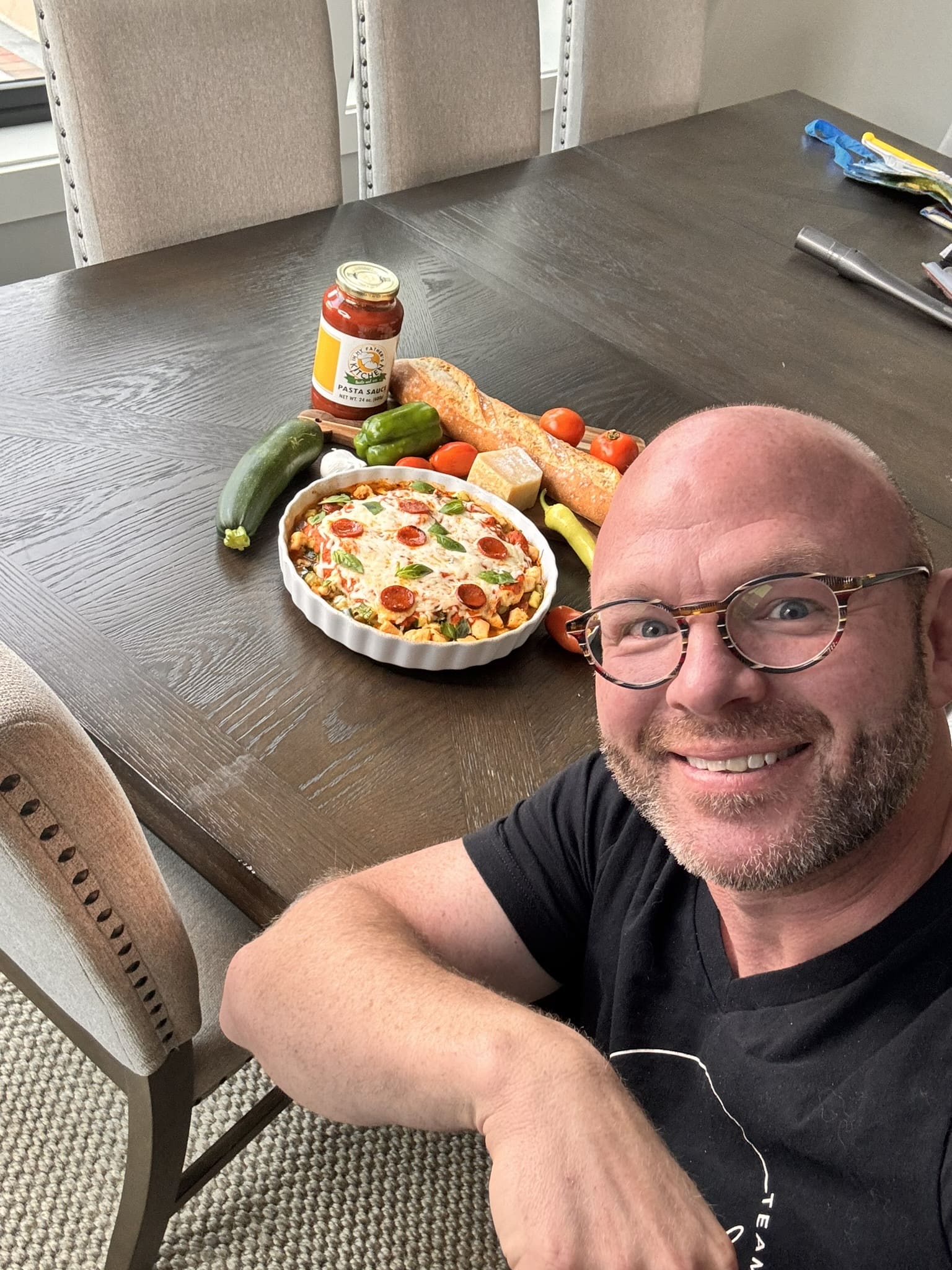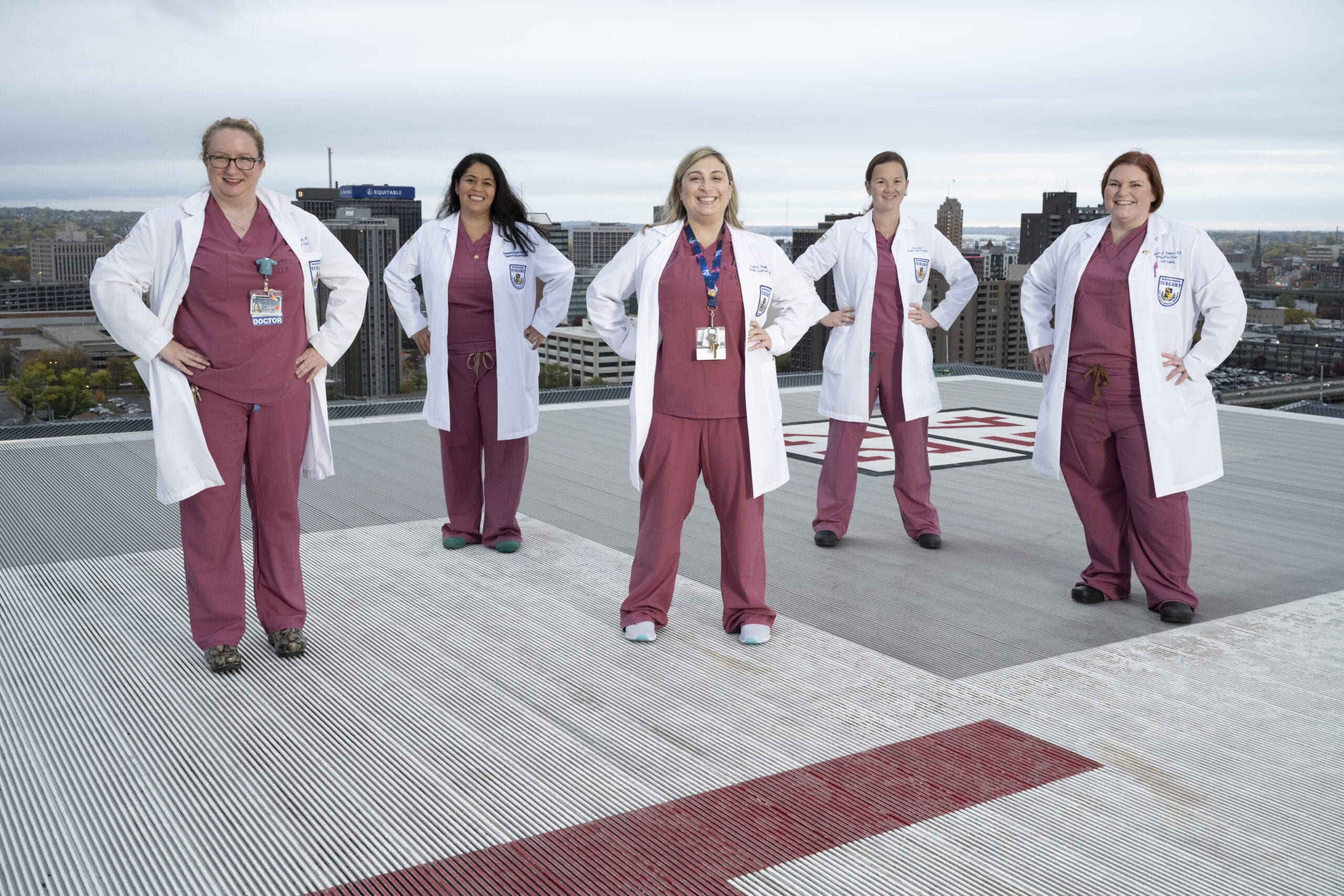Team Tess’ Tomorrows
By Lorna Oppedisano | Photography by Alice G. Patterson
In 1955, a group of parents got together. They had one thing in common: their young children had been diagnosed with a chronic, incurable disease — cystic fibrosis. The children weren’t expected to live past elementary school.
The parents formed the Cystic Fibrosis Foundation, with a simple goal in mind. They wanted to “add tomorrows,” a motto the organization still follows today.
As decades passed, the foundation’s grassroots efforts helped people diagnosed with cystic fibrosis live well into their 30s, 40s and beyond. Medications and treatments were invented and improved upon over the years.
The national organization still relies on parents, friends and community members to help raise money for research, and receives no federal funding.
So far, there’s no cure for cystic fibrosis.
“We’ve got the end in sight,” said Amy Spranger, the executive director of the Cystic Fibrosis Foundation’s Central New York chapter. “And we can’t take our foot off the accelerator right now.”
The chapter of the Cystic Fibrosis Foundation covers a 15-county region, from St. Lawrence County to Broome County. That’s approximately the same footprint the Robert C. Schwartz Cystic Fibrosis Center at SUNY Upstate Medical University serves, Amy pointed out. The chapter focuses on fundraising with a number of walks, an annual hike, a dinner dance and more throughout the year. The money raised goes to the national office. In turn, more than that amount comes back to the area, Amy explained.
Year after year, Team Tess leads the way in fundraising efforts. Last year, the group raised $60,963. The team was formed in part by Mary Michaels, shortly after her daughter Tess was diagnosed with cystic fibrosis in 2001. She’s been a leading advocate since, and was named this year’s Champion for a Cure at the local chapter’s 65 Roses Dinner Dance in February.
“[Mary is] so humble and so down-to-earth. She had said to me,‘Well, I’m just doing what any other mother would do,’” Amy said. “She just doesn’t have a perspective on her network and what she raises, and really how much she does for the chapter and the foundation.”
The diagnosis
When Mary and Mike Michaels met in high school, they hadn’t heard of cystic fibrosis. When they started dating years later, they hadn’t heard of cystic fibrosis. When they got married and had their first child, they still hadn’t heard of cystic fibrosis.
They didn’t know about the disease throughout the first year of their daughter Tess’ life, 12 months filled with medical appointments, colds, upset stomachs and 15 to 20 diaper changes a day.
“Had we even known about what cystic fibrosis was, maybe we would have thought about it,” Mary said. “But we didn’t think twice.”
Tests for cystic fibrosis weren’t typically performed at birth. It’s now mandatory, Mary explained, adding that it can save parents the months she and Mike spent questioning what might be wrong with their child, and can add more time for treatment.
When Tess was about 14 months old, the doctors decided to test her for the disease — first with two sweat tests, which signaled positive, and then with blood work. The first-time parents finally knew the cause of their daughter’s chronic colds.
They were initially devastated, Mary said, traces of the emotions that accompanied the diagnosis showing on her face.
“Is she going to have a normal life?” Mary recalled wondering.
The parents were advised not to venture much further online than the Cystic Fibrosis Foundation’s website. They followed the advice for the most part, turning their efforts to developing a routine of care for Tess and fundraising for the foundation.
Around the same time Tess was diagnosed, Mary’s sister found a flyer at her hairdresser’s for the foundation’s Great Strides walk.
“We should do that this year,” she suggested.
With the help of friends and family, Team Tess generated about $3,000 that year.
“Our thought was basically: the Cystic Fibrosis Foundation, the more money they get, it goes to science and they’ll find a cure,” Mary said. “That’s our belief.”
Adding to the team
The first year of treatment was hard. Tess was too small to wear the vest she now uses to help dislodge the mucus from her lungs, and too young to really communicate very well with her parents. Mary and Mike were limited to chest physical therapy.
“They give you a sheet of directions on all the different positions for postural drainage,” Mary said. “You have to stick [your child] upside down and slap their backs with these cups that they give you. You do that for two minutes, and then you flip them in another direction. It ended up being 45 minutes of torture.”
Mary and Mike would take turns singing or reading to Tess while the other parent did the treatments. It didn’t make witnessing their child going through the experience any easier.
Eventually, after Tess turned 2, they were able to stop the chest physical therapy and turn to the vest, which she still uses daily.
When Tess turned 4, the family grew. Mary and Mike had another baby girl, Taylor. Although she had a 25 percent chance of being diagnosed with cystic fibrosis — since the parents both carry the gene — she wasn’t born with the disease.
Raising a 4-year-old and a newborn would have been a handful for anyone, regardless of illness. With the routine of daily treatments, it was hard to juggle everything, Mary said. She added that in some families, the majority of the responsibility might fall on the mother. For the Michaels, that wasn’t the case.
“Having Mike,” she began with a smile, “he’s so helpful. … We’re definitely a team, because we couldn’t do any of it without each other’s help.”
Like any pair of siblings, Tess and Taylor have been jealous of each other at times, Mary said. When Tess had doctors appointments, Taylor would have to stay at a friend’s house. Plans had to be made around Tess’ treatments.
But Tess probably envies the fact that her sister doesn’t have to visit the doctor as frequently or undergo the treatments, Mary said.
“Hopefully they get it, that someday they’ll be best friends,” she added with a smile.
The daily routine
In the last decade and a half, delivery of treatments for cystic fibrosis has advanced, Mary said. Now, patients can get the medicine they need more quickly.
But Mary and Mike still have to make sure Tess spends time with her medicines and machines each day.
Every morning, Mike wakes Tess up around 5:15 a.m. to start the process. First, she takes a puff of medicine to open her airwaves. Then, she puts on the vest, and uses a breathing nebulizer. It makes her cough up the mucus. Next, she takes a couple more treatments, including antibiotics. Then — about 45 minutes to an hour after the whole routine started — she eats breakfast, takes enzymes and other antibiotics, and starts her day. Throughout the day, she’s on a 23-hour continuous IV.
Tess also has to check her blood sugar regularly, because a high percentage of cystic fibrosis patients develop diabetes as well, Mary explained. At this point, they’re not sure if Tess has the additional disease.
They try to control her blood sugar throughout the night with a feed tube. Since cystic fibrosis patients burn more calories just breathing than those who don’t have the disease, they need to take in more food, Mary said.
“Everything that [Tess is] on, you think about how her body handles all that stuff, but she does,” she said. “It doesn’t slow her down.”
Fighting for a cure
Since Mary and Mike learned what cystic fibrosis was back in 2001, their family has been — to use Mary’s word — a team.
The Michaels live busy, crazy lives, Mary said with a laugh, and nothing gets in the way of that. They go on family vacations. They have neighborhood nights with friends. Mary and Mike go away for the weekend sometimes.
Last summer, the family experienced a “first.” Tess had only spent a weekend at most away from her parents. In August, she spent a week and a half away — overseas on a school trip to Europe.
While it was definitely harder on Mary than it was on her daughter — “She was like, ‘I’m away! Woohoo!’” Mary joked — it did help the family work toward goals to make Tess more independent, Mary pointed out.
“We don’t let this slow us down, or slow her down,” she said.
The Michaels family runs circles around the disease. And in the relationship they’ve built with the Cystic Fibrosis Foundation, they’re continually raising awareness and funds to find a cure. Although this year’s Champion for a Cure has helped spearhead efforts to raise thousands upon thousands of dollars for the foundation, she remains humble. In Mary’s eyes, she’s just a mother doing a mother’s job.
“I always say that we’re only as fortunate as the people that come to our events. We are so lucky, because…” Mary paused and then, with a strong smile, said, “We have such a good support system.” SWM
Interested in fundraising for the Cystic Fibrosis Foundation? Visit cff.org.





